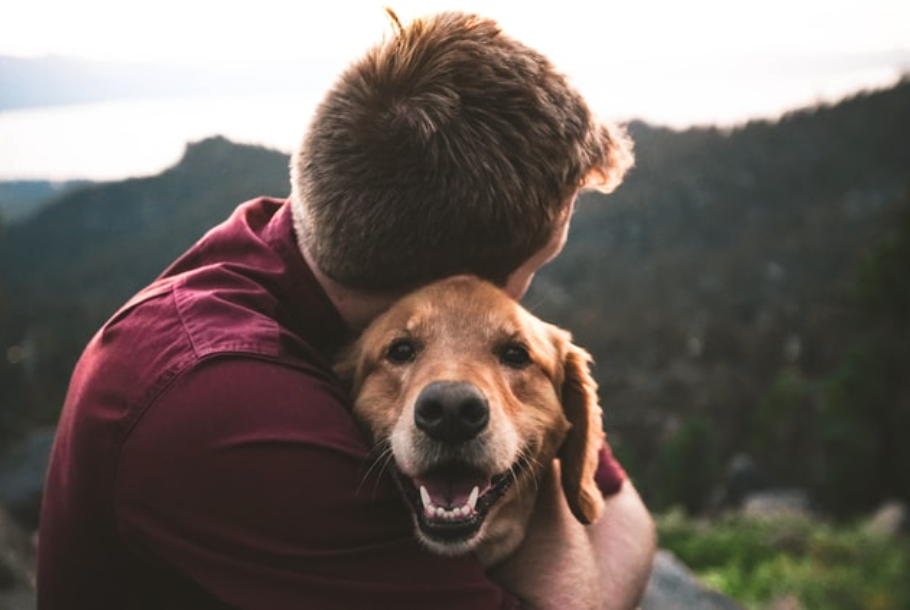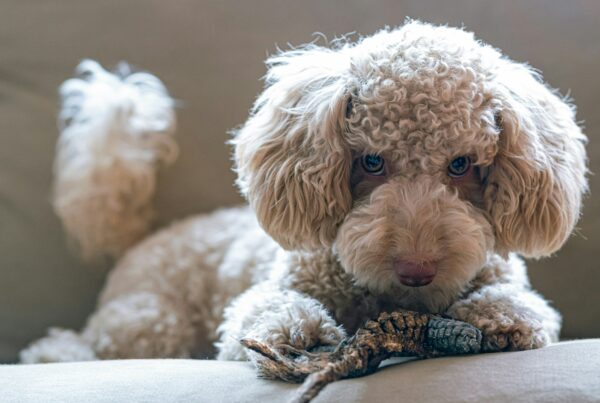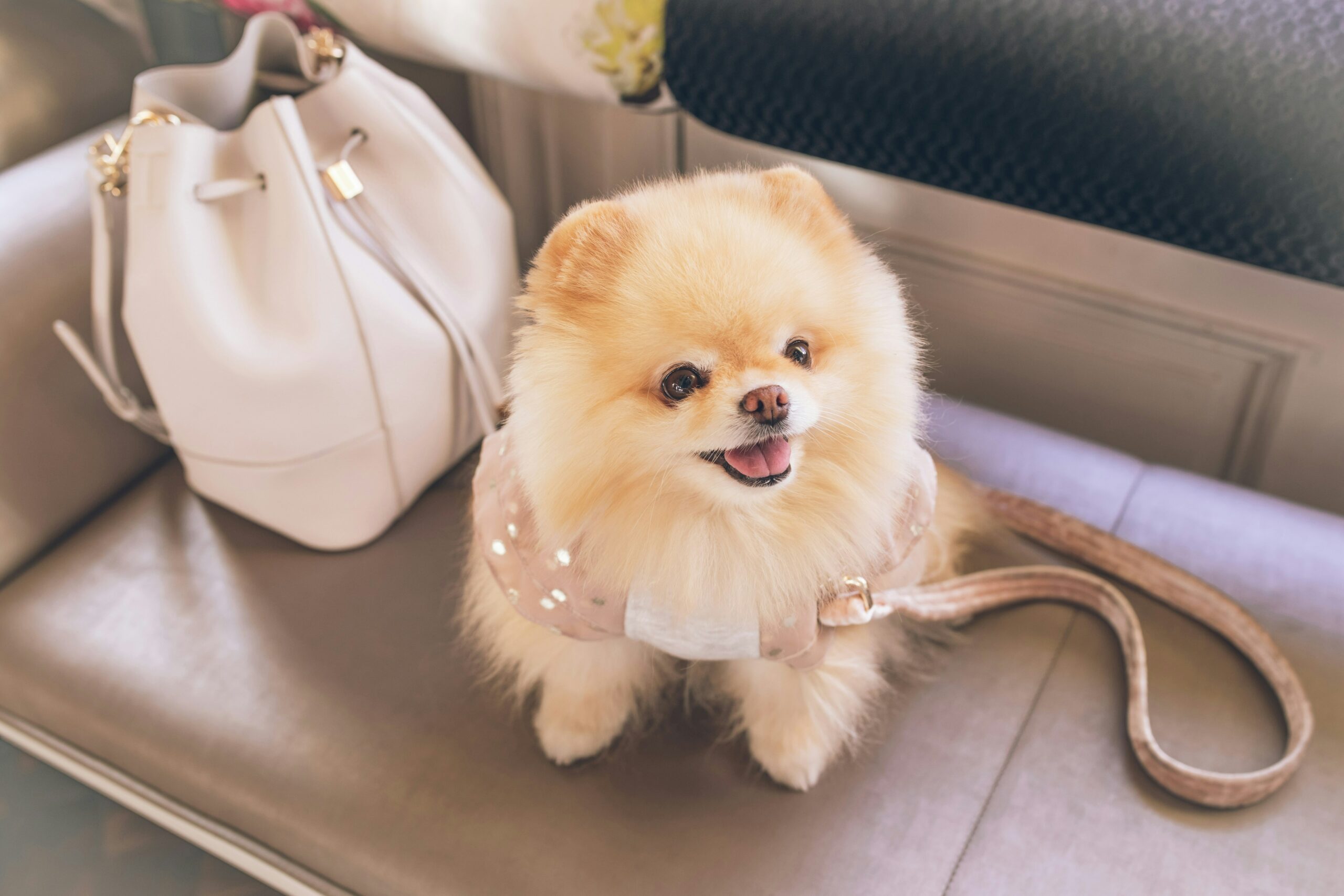You know when your puppy is in the house, and he’s just so excited to explore everything? He can’t seem to restrain himself, racing around from one room or object to another. Dogs are adorable, but they can be highly energetic animals. Some pups may not know when to calm down and take a break— which is why it’s crucial for you as their owner to keep them from getting out of control.
Is the room overly hot, and does he need more water? Maybe he needs more sleep at night. Navigating through these questions can be challenging, especially if you’re a first-time owner, but the journey can be rewarding for both of you and your dog. So, how do you train a hyperactive dog? Read on to find out and start implementing these changes first.
Set Up a Schedule for Your Pup
It’s not always easy to find time, but setting up an activity schedule from morning until night makes all the difference to both you and your canine companion. They know what’s coming next and will be more likely to calm down when there isn’t anything new or different happening every day— which means less stress on everyone involved, especially the fur parent!
The routine that you set may also be helpful when your dogs are anxious and stressed, which causes restlessness or even insomnia. Regularly giving them lots of love and affection will make them feel loved and safer, which provides stress relief for their overall wellness.
Give Your Dog Enough Exercise
Even the most well-behaved dogs can get restless and bored. Try not confining them for too long as they need space and a good walk. They have to feel stimulated, so play games with them, such as hide-and-seek or fetch. Giving your dog their daily dose of physical activity will help burn off that extra loveable energy.
Also, dogs need to have time for exercise before training to be less unfocused during the session. If you don’t give your dog enough time to walk or run around, it can make training more challenging because of all the pent-up energy that makes them misbehave with a lack of focus. Keep this in mind when teaching a new trick or command. If you haven’t taught your dog to play fetch, learn how in this guide later on!
Start With the Basics
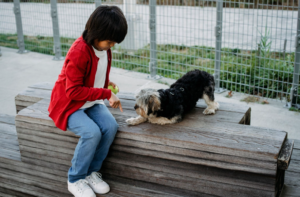
There are times when your pup will be a little too hyper. It’s important not to punish or yell at them for that, as it’ll only encourage more bad behavior. Hyperactive pups with shorter attention spans need smaller tasks while slowly increasing the intensity of training as they grow into adult dogs. Start with the basics like sit, stay, stand, and come.
According to Scientific American, a Border Collie from South Carolina named Chaser has learned to differentiate over a thousand objects. The secret? Its trainer started with simple words accompanied by positive reinforcement, and progressively added more advanced concepts for the pup’s brain to chew on.
A dog is like any other creature in that they respond better when given praise rather than just commands. This means you should focus as much on praising your pups (and giving them treats) for doing something correctly as defining what it was exactly they did right— it’ll build their confidence up faster!
Sit
To train your dog to sit on your command, you can start by holding a treat. Move the food close to the pup’s nose and hold it higher as they follow its movement up until their head is pointing upward. This position will encourage your dog to sit down by instinct. Remember not to take the treat too high, as this might cause your dog to jump and reach the treat themselves!
Stay
Teaching your dog how to stay in one place is one of the basic skills that your dog will need to learn. According to a renowned dog trainer, Zak George, this can be separated into three categories: staying in one place for some time, staying within distance, and staying while distracted.
Staying For Some Time
It might be a little bit difficult for hyper pups as they tend to move around a lot. Start by asking your dog to sit down in one place and have a clear signal like your palm facing them. When your dog successfully stays put for a set amount of time, a few seconds up to a minute, you can then offer some treats for a job well done. Don’t forget to praise your dog for following your command!
Staying With Distance
Begin by asking your dog to stay first and then start moving inch by inch farther from them. If your dog stays put after you’ve moved, give them a few treats. The hyper dog learns best by repetition. It is key for them to practice repeatedly between different training sessions to adjust without losing their attention from the task at hand.
Staying While Distracted
This will probably be the hardest staying skill to teach, knowing that they might lose their focus on you in a split second while training. To teach them this skill, start by asking them to stay in an area that can grab their attention easily, such as an open door. If they hold their position, reward them with treats and continue training!
Stand
The stand is a fairly easy command to teach. You can start while your dog is sitting or lying down. Get your dog’s attention by holding your treats right in front of their nose and then slowly move them away. Your dog will stand while following the treats. When they do, praise your dog and give them the treat as a reward!
Come
For your dog to learn how to come on command, start by holding treats at a distance. Make sure that you get the attention of your pup and call out excitedly with every step closer they take. When their nose is inches from the reward, happily hand over those tasty treats and repeat the process!
Train with Clickers and Markers
When it comes to positive reinforcement, clickers and markers are your best friends, and there’s a science behind it. Clickers signal your dog for a treat with a quick beep-like sound; whereas makers are verbal cues that work the same as clickers, telling your dog they did something good.
Timing is everything when using these tools: if you use them too often, they can jump uncontrollably, or clicking will just become noise and not matter anymore; but if used infrequently enough so as not to lose effectiveness in training sessions, you’ll have an obedient pet in no time!
Give the Right Amount of Food and Water
Give your furry friend a healthy diet and plenty of water to keep their energy levels balanced— this will keep your dog happy and hydrated!
Let your dog have a treat as an occasional light snack, but never replace mealtimes with sweets. In the past, sharing some human food might be a common way to give them a treat. However, many people are against it these days for one reason— it can harm them if you’re not careful enough. Your pet needs to be able to eat during their regular meals, and while treats can provide vital nutrients in small quantities, they should not serve as the primary source of nutrition.
Lastly, dogs are very social animals, and we often want to make them happy. But the way you give something can change how they behave in the future. If your dog is begging, crying, or barking for food, then it’s not time to reward them with a tasty snack, as this may only reinforce their bad behavior. Only offer them a treat if they sit and act calm, so it becomes their second nature.
Play Fetch
Fetch is not just an exercise for your hyperactive dog but a bonding activity that will improve how you both communicate. You don’t need fancy equipment or even get up from the couch!
Just grab something that your dog likes which you can throw— whether a tennis ball or some other type of toy. Your furball will go with excitement as they chase after their new favorite! When your dog grabs it, reward them and toss it again. Repeat this until your pup can reliably catch and return.
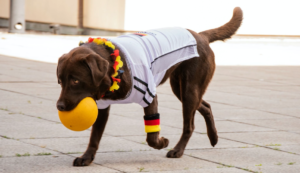
The key to training any hyperactive pup is to set up a schedule and start slowly. Today, our team of experts has compiled this blog post about training your dog to calm down and be more obedient. To do so, you must also learn yourself! It can be tempting to punish or yell at your pup for being energetic, but this will only encourage more bad behavior. Be patient and give them plenty of exercise. Give it time, because ultimately, you will want a well-behaved dog that listens well. Think about other pet owners who have successfully taught their pups not to act wild with these tips. As these people did, you can too!
Your Pups Going to be on Point Now, Right!! DON’T MISS our other post on How Your Home Undermines or Helps your Pup LISTEN BETTER, be LESS DEMANDING and HIGH STRUNG.
Images:
- https://www.pexels.com/photo/young-black-man-playing-with-dog-during-training-in-park-5745228/
- https://www.pexels.com/photo/ethnic-boy-taming-yorkshire-terrier-on-wooden-platform-5733144/
- https://www.pexels.com/photo/photo-of-labrador-biting-yellow-ball-1193895/
Author bio:
Cyd Ross is a founding member of an organization dedicated to rescuing livestock and pets from evacuation zones. Ranch life has given her experience with most animals, but her focus is on training horses and dogs. Cyd loves competing in endurance events of 50-100 miles with her Arabians.
Love our content? Share it with a friend or link it to social media. Like short clips of cute household pets? Training tips? Follow us on instagram @nydognanny or on YouTube at nydognanny. Have some news you needs to get to dog and cat parents stat? Email info@newyorkdognanny.com with your article pitch.

